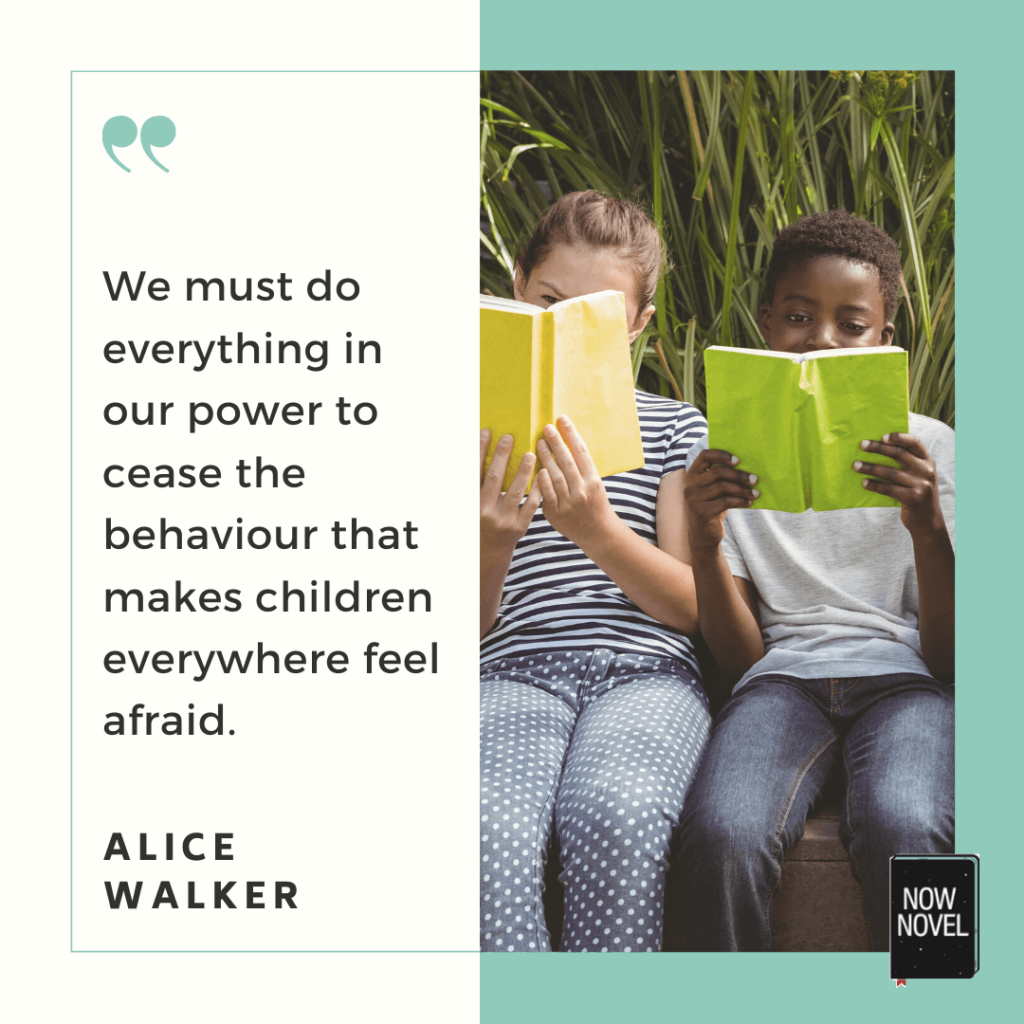The development of characters is a topic blog readers and Now Novel members often ask us about. Creating an interesting, dynamic character arc is easy when you’re aware of the many ways people change. Here are 6 interesting ways people change, plus tips to craft a compelling, engaging character arc:
6 ways characters in your story could change:
- Growing up or old(er)
- Getting richer or poorer
- Growing wiser or more foolish or forgetful
- Changing physically
- Changing temperament or behavior
- Changing in belief or ideology
Let’s explore these ideas further:
1. Growing up or old(er)
In the development of characters, there are some things every character shares (unless they’re Benjamin Button or Peter Pan): Growing up and growing old(er).
‘Coming-of-age’ stories abound in books, film and theater. Many authors have written character arcs where protagonists proceed from childhood innocence to mature wisdom (or stolen innocence to perpetual adolescence).
There are many ways to grow up and grow older. Gracefully or disgracefully. Kicking and screaming or with delight, with relish.
If writing about a longer arc of time in a character’s life, think about how the aspect of aging could be interesting. Does your character:
- Acquire new insight or wisdom?
- Overcome past traumas and hurdles?
- Acquire poor health with age (or overcome the health obstacles of their youth)?
- Remain stuck in perpetual childhood or adolescence?
Making characters differ in how they feel about or approach aging also helps to make the cast of your story more diverse.
A vain character might try ever lotion and device they can to appear younger, while another might wear their wrinkles and sun spots with indifference or pride. What does a character’s relationship to the aging process say about them?
2. Getting richer or poorer
The development of characters in stories often involves economics. Poor stepdaughter marries rich prince. Rich female CEO loses fortune in insider trading gone bust.
Rags to riches and riches to rags stories are intriguing because they’re aspirational; exciting (the former) or tense; cautionary (the latter).
How does a character’s changing financial cirumstances affect them?
This may provide an interesting element of a character’s arc.
In Charles Dickens’ Great Expectations, a mysterious benefactor leaves the protagonist Pip wealthy. He’s mocked by working class acquaintance who mimics him, saying ‘Don’t know ya!’ when he shows up in finery looking the gentleman.
This scene shows how new wealth alienates Pip from his former community and also how some resent and mock his change of fortune. It creates new contrast between Pip and others, new assumptions and expectations, too.
A character who is proud and attaches self-worth to their net worth may be embarassed of a financial loss. One who is non-materialistic might not take it as much to heart (or might never have gathered wealth in the first place).
In Dickens’ story, the development of character in Pip, via his increasing fortune, is made more interesting through the suspense concerning his benefactor. We only learn later that the person who left him money is not the character we thought.
Characters’ arcs involving rags to riches or the reverse thus offer potential for jealousy, rivalry, suspense, mystery and more.

3. Growing wiser or more foolish or forgetful
Like characters who go from bedraggled rags to velvet splendour, fiction is full of characters who go from ignorance to knowledge (and vice versa).
The acquisition (or loss) of insight may be comical, tragic, moving or suspenseful.
The development of characters through acquiring knowledge is common in fantasy, for example. Often this is suspenseful. As we watch an apprentice wizard or witch adventure, we ask things like:
- Will they master the spell?
- Can they control their new powers?
- Will power go to their head?
- What do they learn about themselves or others in the process?
Losing wisdom or knowledge takes many forms. It might be comical. For example, a father going through a mid-life crisis loses good judgment and purchases a lurid sports car that embarasses his kids.
Losing perspective or knowledge is often a poignant character development too. For example, how the author Iris Murdoch in the biopic Iris grapples with worsening Alzheimer’s, for example.
‘Knowledge’ is a broad area for making characters change. What is gained or lost, what new conflicts, moments of humour or pathos could this lead to?
How much characters develop depends on what type they are, too – whether they’re a protagonist or walk-on, for example.
4. Changing physically
Development of characters is often most apparent in contrasts.
For example, a political prisoner in a story might compare the rat-infested meanness of their cell to the splendour of the villa they used to call home.
Physical changes around your character (changes of setting) can help to show their development as much as physical changes to the person.
For example, perhaps the prisoner finds hope and courage they didn’t know they had in their determination to triumph over their unjust imprisonment.
Physical changes to a person provide many ways to surprise, amuse or move readers.
In Jane Eyre, the developing attraction between Jane and Edward Rochester has many suspenseful twists and turns. Yet when Rochester loses a hand and his sight in a fire, it calls into question Jane’s commitment. When he asks “Am I hideous, Jane?” referring to the changes, she quips “Very, sir; you always were, you know.”
Here the moment is played for laughs. However, in the 2011 film adaptation by Carey Fukunaga, the reunion where Jane first sees Rochester scarred and sightless has no dialogue as she touches his face, creating the sense of a care that surpasses physical appearances or words.
This example shows how the same physical change can be used to many different effects, to develop different facets of characters and their connections.
5. Changing temperament or behavior
The development of characters via their emotions and moods is a powerful way to develop a deep sense of a lived life.
Changes in temperament in a character may arise from natural biological processes or a power dynamic or situation that is far from ‘normal’.
For example, in a story the parents of a young character in an abusive relationship or friendship might initially misread their behavioral changes as a natural part of puberty and hormonal changes.
Think about not only the ways a characters behavior and emotions change as a situation develops, but how others react.
How would the parents, who don’t have all the context react versus, for example, a best friend who does?
Developing characters through body language, actions and/or dialogue suggesting shifts of temperament helps to create narrative suspense. The reader asks, ‘Why is this character acting this way?’

6. Changing in belief or ideology
The development of characters often also involves shifting beliefs and values. For example, a racist character realizes the way power systems such as social pressure have made them cling to false bias or judgments. A character working for minimum wage in an exploitative environment realizes the fact and joins a union.
Changes in belief or ideology often happen out of step with changes in behavior. We often question old certainties before acting out new convictions.
What does your character believe at the start of your story versus at the end? What shaped their views, their politics and their identity at the start of the story and what experiences shift these things? Does a change in belief or losing a false perception bring new conflict or new freedom?
Thinking slowly and creatively about each of these ways a character changes (and how one type of change might affect another) will help you develop engaging, complex characters.
Develop characters in easy, prompted steps in the Now Novel dashboard.

